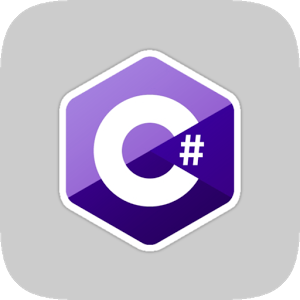Home > Article > Backend Development > Recommended 10 articles about multi-threaded asynchronous
This article mainly introduces the multi-threaded asynchronous update UI (progress and status information) implemented by Winform in c#. The editor thinks it is quite good, so I will share it with you now and give it as a reference. Let’s follow the editor and take a look. Introduction When developing Winform programs that require a large amount of data reading and writing operations, it often takes a certain amount of time. However, during this time period, the interface UI cannot be updated, resulting in user It seems that the interface is in a state of suspended animation, resulting in a bad user experience. Therefore, in applications that operate a large amount of data, multi-threading needs to be used to handle this situation. It is very convenient to use multi-threading in C#. You only need to use the Start method of an instance of System.Threading.Thread, but how to realize the interaction between multi-threads is not that simple. This article implements the use of sub-threads to process data and updates the UI status of the main thread in real time. Let’s start step by step to implement the demo program of asynchronous thread update UI. Application background: Write a certain amount of data into a text file, and the real-time progress of writing the data needs to be reflected in the main interface. Requirement: The written data needs to be encapsulated into a class. Practice

Introduction: This article mainly introduces the implementation of multi-threaded asynchronous update UI (progress and status information) in Winform in c#. The editor thinks it is quite good. Now I will share it with you and make it for everyone. refer to. Let’s follow the editor to take a look
2. Python multi-threaded asynchronous task queue

Introduction: Many scenarios require an asynchronous callback mechanism in order not to block. This is a simple example. Python's multi-threaded asynchronous commonly used queue and threading modules #!/usr/bin/env python# -...
3. 3 of implementing PHP multi-threaded asynchronous requests Methods_PHP Tutorial
#Introduction: 3 methods to implement PHP multi-threaded asynchronous requests. I have seen many versions of PHP asynchronous request methods on the Internet. Here is a brief summary of a few commonly used methods to share with you. 1. Use CURL to implement one-step requests. CURL extension is the most commonly used one in our development process
4. PHP implements multi-threaded asynchronous non-blocking_PHP tutorial
Introduction: PHP implements multi-threaded asynchronous non-blocking. At present, the situations encountered using multi-threaded asynchronous non-blocking are: 1. Sending emails. 2. Record logs 3. Push messages on mobile phone (use personal push). 4. Use single-threaded synchronous blocking to send text messages
5. PHP implements multi-threaded asynchronous non-blocking
Introduction: At present, the situations that have been encountered using multi-threaded asynchronous non-blocking are: 1. Sending emails. 2 Recording logs 3 Mobile phone message push (using personal push). 4 Sending text messages using single-threaded synchronous blocking takes a long time. Solution: 1 The company’s current solution: gearman2 swoole:
6. Implementing PHP multi-threaded asynchronous requests 3 Method
Introduction: There are many ways to implement PHP multi-threaded asynchronous requests. This article has compiled 3 common methods. You can refer to the following
7. Get screenshots of reviewer websites asynchronously
Introduction: First, the effect (Brother Quan, you can try the effect this time, really Put it on the website hahaha) The RSS capture method I wrote yesterday is using PHP, and we know that PHP itself cannot be loaded asynchronously by multiple threads, which does have a great impact on the network speed, so asynchronous still has to be used and can only be changed. A jQuery method, adapted from the Akismet background preview. In addition, I heard that Willin has made friend links before
8. 3 ways to implement PHP multi-threaded asynchronous requests
Introduction: Welcome to the Linux community forum, interact with 2 million technical staff> Enter the PHP asynchronous request method that I have seen many versions on the Internet. Here is a brief summary of several common methods to share with you 1. Using CURL to implement one-step requests CURL extension is one of the most commonly used methods during our development process. It is a powerful HTTP command line tool that can simulate POST/GET
##9. [Original] Use PHP to build a socket service based on the swoole extension (with installation steps for the PHP extension)
Introduction: In a recent project of the company, it was necessary to use PHP to build a socket service Socket service. Originally, PHP was not suitable for services, because cooperation with third parties requires the use of efficient and stable TCP protocols for data communication. After many attempts, we finally chose the open source PHP extension: swoole, which is written in C. Multi-threaded asynchronous Server. Binary data communication uses PHP's own
##10.3 methods to implement PHP multi-threaded asynchronous requests_PHP
Introduction: There are many ways to implement PHP multi-threaded asynchronous requests. This article has compiled 3 common methods. You can refer to them[Related Recommended Q&A]:
multi-thread - C++11 thread library, why there is no start method
##C++11. thread library, why there is no start method
##c++ - Question about multi-threaded asynchronous callback?
The above is the detailed content of Recommended 10 articles about multi-threaded asynchronous. For more information, please follow other related articles on the PHP Chinese website!